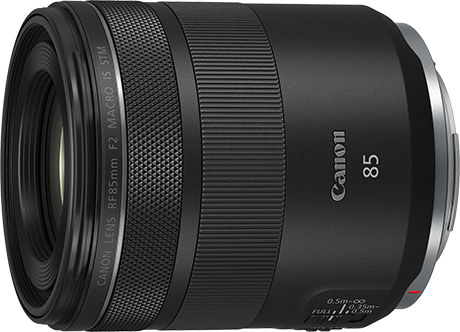- Specifications
- Block diagram
| Marketed | October 2020 |
| Original Price | Open price |
| Lens Construction (group) | 11 |
| Lens Construction (element) | 12 |
| No. of Diaphragm Blades | 9 |
| Minimum Aperture | 29 |
| Closest Focusing Distance (m) | 0.35 |
| Maximum Magnification (x) | 0.5 |
| Filter Diameter (mm) | 67 |
| Maximum Diameter x Length (mm) | Approx. 78.0×90.5 |
| Weight (g) | Approx. 500 |
Single-focal-length 85 mm lenses facilitate an ideal shooting distance that isn’t overbearingly close to the subject, which is an important requirement for portrait photography in particular. In addition, the wide f/2 aperture makes possible smooth bokeh effects that can be creatively utilized in portrait and various types of everyday photography. What’s more, thanks to a maximum magnification ratio1 of 0.5x and a minimum shooting distance of 0.35m, the lens is built for macro photography that lets users get up close for shots of such small objects as flowers and capture precise details and textures that are difficult to distinguish with the naked eye.
The lens leverages the advantages of the RF mount, including a large internal mount diameter and short back focus2, larger lens elements can be positioned further towards the rear (camera-facing side) of the lens. The RF85mm F2 MACRO IS STM comprises 12 lens elements in 11 groups, and includes one UD3 lens. In addition, the lens realizes a compact and lightweight body measuring approximately 90.5mm in length and weighs approximately 500g, and is designed to help reduce chromatic and other optical aberrations that can diminish the quality of images.
When used with the EOS R5 (released in July, 2020), the RF85mm F2 MACRO IS STM’s image stabilization (IS) capabilities work together with those of the EOS R5’s in-body IS to achieve the equivalent of 8.0 stops4 of IS. When paired with the EOS R (released in October 2018), the lens can camera can deliver 5.0 stops4 of IS.
1 Magnification refers to the ratio between the size of the subject and its size when reproduced on a camera’s image sensor. A magnification ratio of 1.0x (1:1) means that a subject can be reproduced at its actual size on the camera’s image sensor.
2 A short distance between the optical axis from the vertex of the rear lens element to the imaging plane when focused to infinity.
3 A lens element utilizing ultra-low dispersion glass.
4 Based on CIPA standards.

UD lenses IS unit


